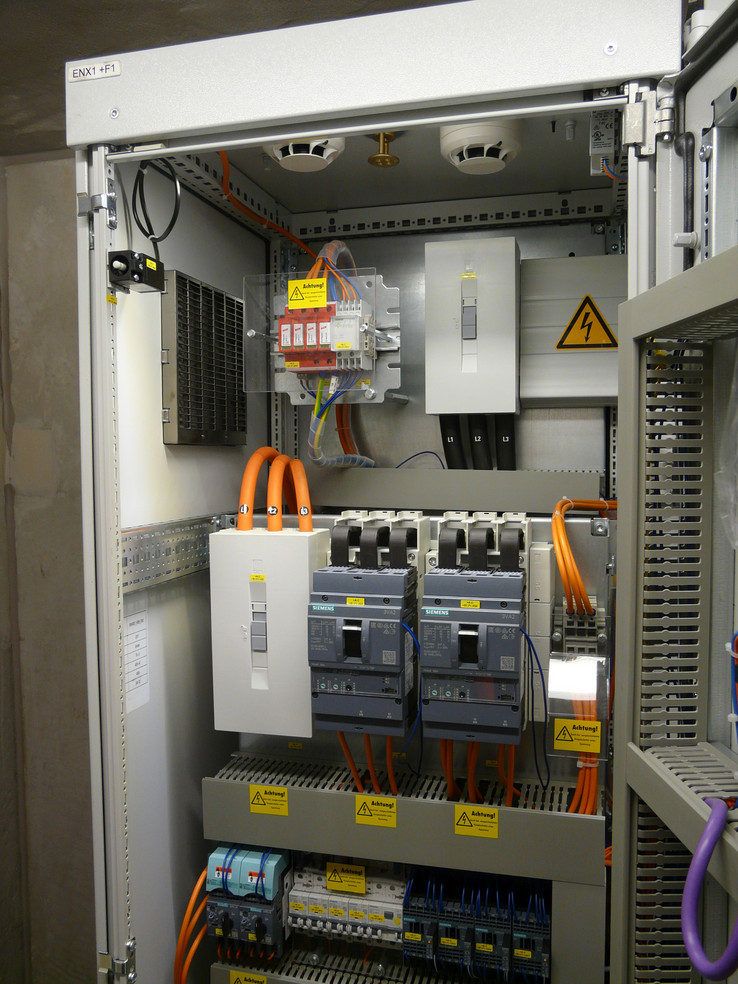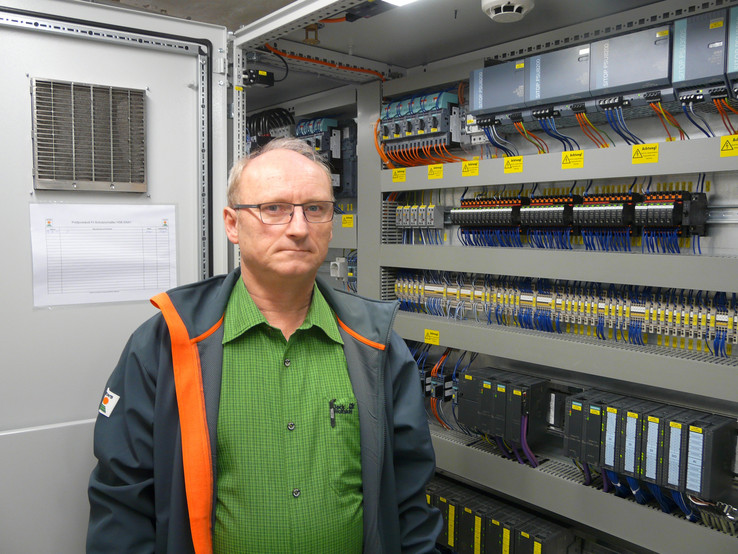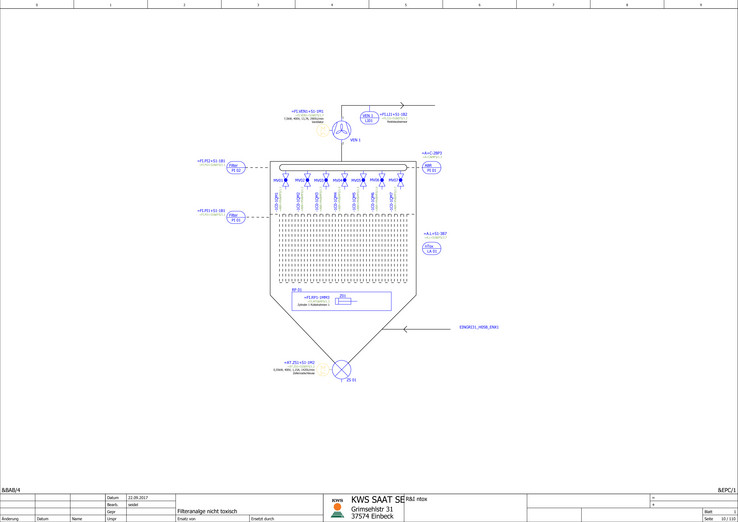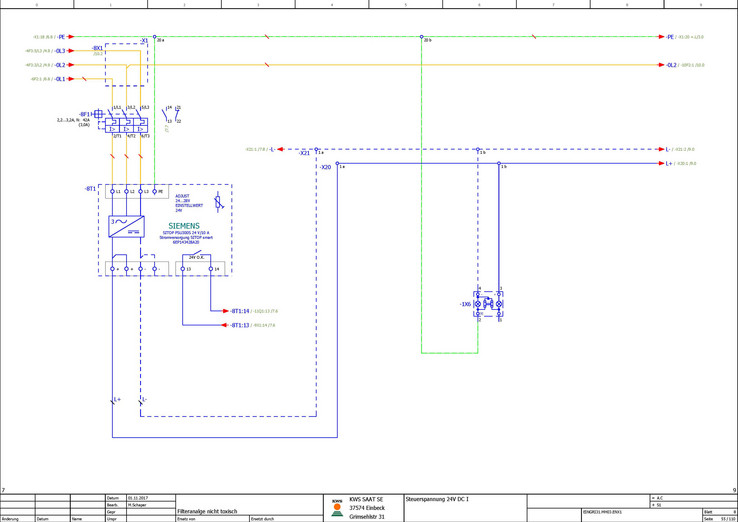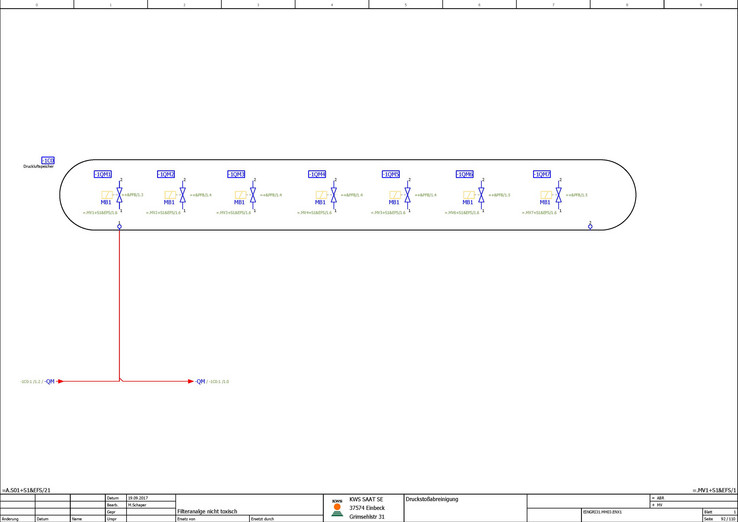Parametrisation instead of drawing
KWS Saat uses the EPLAN Platform for manufacturing specialist machinery
The majority of the 4,600 employees at KWS Saat SE are involved in the development of new seed varieties. The complex machines and systems required for seed processing and breeding are also manufactured in-house using the EPLAN Platform – beginning with P&I diagrams which are designed using the Preplanning module. The underlying principle is consistent, cross-disciplinary design processes from mechanical and process engineering through to fluid power and electrical engineering.
Designers know how to develop different types of machinery required for different purposes. But how do you develop seeds to produce sugar beet or sunflowers? The breeders and researchers at KWS, headquartered in Einbeck, know exactly how. The company was founded in 1856 and now employs nearly 5,000 people worldwide. It has a turnover of more than one billion euros and is one of the world's leading producers of seed. It focuses on temperate-climate seed varieties, especially sugar beet, corn, cereals and oilseeds.
Every year, KWS launches new varieties of seeds onto the agricultural market, e.g. seeds which produce higher yields or are pathogen and insecticide resistant. The process is lengthy and can take ten to twelve years from the petri dish to a marketable product. Newly developed varieties first have to undergo intensive testing, then approval, and then propagated by partner farms. Seeds are a natural product so quantities cannot be simply produced as required.
Special machinery for seed processing
To get seeds into marketable products requires state-of-the-art process technology like electrical engineering. Manfred Schaper, electrical and automation designer at KWS: “In Einbeck we operate the world's most modern seed processing plant”. The main development department, which also develops machinery for other KWS locations, is also located here.
The work involves highly demanding, specialist machine design. For example, the highly automated systems for processing sugar beet seeds combine the processes of cleaning, sieving, drying, classifying, coating with compounds (“dressing”) and the application of active ingredients. This results in heterogeneous seeds being converted into individual grains of a defined size. These are then sown at high speed by automated seed drills at intervals of approximately 22 centimetres. Farmers are spared the anguish of garden lovers everywhere of only a fraction of the sown seeds appearing in spring: KWS promises a take-up rate of 98%.
Quest for integrated engineering software
Seed processing represents a kind of “campaign production” with specific time windows, which means machines need to be available at the right time. In addition to designing new machinery, the retrofitting of existing systems is also part of the design engineers' range of tasks. Manfred Schaper, Electrical Planner Technical Innovations: “We often adapt existing systems to new requirements.”
Projects begin with a P&I diagram
Mechanical system designers such as Uwe Domhöver first create a P&I diagram of the system to be constructed based on dialogues with the customer. EPLAN Preplanning P&ID is used which enables generation of a graphical overview of the system. Data on individual measurement and consumer points as well as on instrumentation can already be stored at this stage. It is then available to all subsequent engineering phases and forms the basis for a continuous, standardised workflow.
Pneumatics predominate
EPLAN is used not only for electrical engineering but also for pneumatics. Manfred Schaper : “We use pneumatics a lot to automate systems”. EPLAN Fluid is the ideal tool for this: “Our designers configure valve terminals on the Festo portal, send a code to Festo and then get the corresponding EPLAN data. It works very well”.
On the CAD side, EPLAN Fluid and EPLAN Electric P8 are closely linked to ensure consistency in the design of pneumatic automation technology. KWS makes intensive use of the EPLAN Data Portal when selecting components, e.g. frequency inverters. This simplifies the design process considerably by providing the entire engineering process with uniform data and information.
Parametrisation instead of drawing
Implementing EPLAN tools has changed the way designers work. Manfred Schaper: “Previously we drew. Now we parametrise”. Parametrising is popular also because of the department’s workload: “We are expanding strongly and designing plant and machinery for several locations. The new software solutions from EPLAN enable us to work much more efficiently and designers can focus more on creative rather than repetitive tasks”. Optimised design processes also enable solutions to be more quickly accessible to colleagues at the individual production sites.
This is all the more important because KWS systems are extremely complex and the design highly detailed. The very first project that KWS designed in-house using EPLAN was extremely detailed. Manfred Schaper provides an example: “For the drives, we required power dissipation calculations and torque verifications”.
Complex control cabinets – high expectations
KWS control cabinets are typically 2.40 to 9 meters wide and decentrally located according to functions and system components. Explosion protection requirements often need to be observed so the majority of control cabinets are equipped with extinguishing systems. KWS uses the large Siemens modular system for control technology and also the TIA portal. Some of the control cabinets are built by service providers who then also work with the EPLAN Platform.
Design according to the principle of “parametrisation instead of drawing” quickly established itself at KWS. For good reason: it saves time and costs and permits continuous design work across the different disciplines with the core database being enhanced at each step.
The next step: Control cabinet design in 3D
Preparations are currently underway for implementing EPLAN Pro Panel which will enable control cabinet design in 3D. Manfred Schaper also intends to make increased use of macros, e.g. for valve actuators: “Designers then need only to enter the parameters and the actuator is automatically selected and inserted into the circuit diagram with all relevant data. This again saves time: We insert macros from the flow chart, and the schematic is created by the system”.
A follow-up project is to increase the number of EPLAN users using the service: “Technicians at the plant will then have access via a tablet or laptop to both the P&I diagrams and the Electric P8 and Fluid Power engineering. This facilitates error detection and speeds up rectification".



